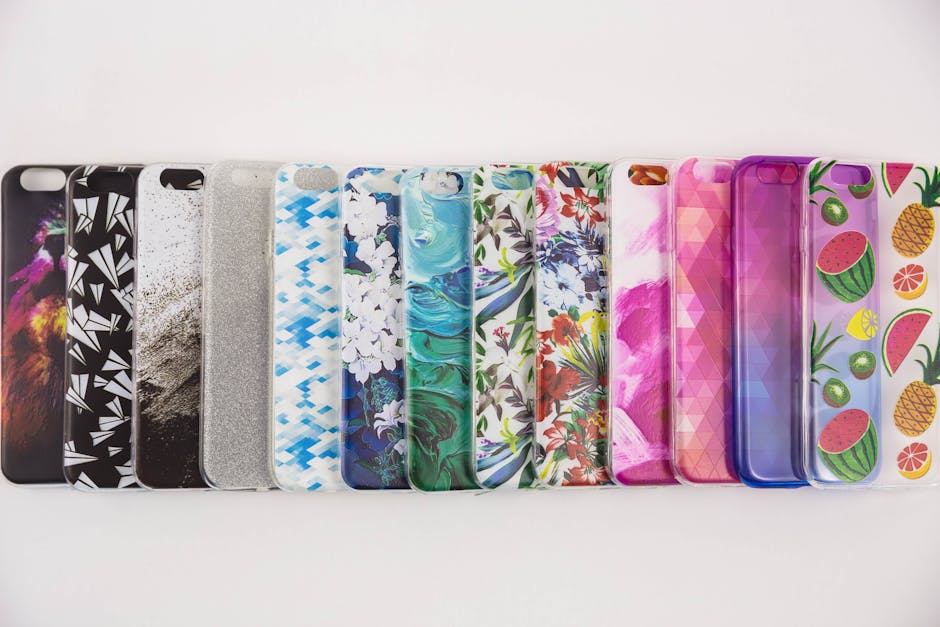Discover the Future: Augmented Reality Devices for Mental Wellness
As we venture deeper into 2025, the intersection of technology and well-being has never been more promising. Among the trailblazing innovations is the array of augmented reality (AR) devices tailored explicitly for mental wellness. These gadgets are not only redefining how we perceive mental health care; they are also offering practical solutions for anxiety, mood enhancement, and mindfulness. Imagine slipping on a pair of glasses and finding yourself in a calming forest, or engaging in guided mindfulness exercises while being immersed in soothing visuals. The future is bright, and understanding how AR can enhance mental well-being is crucial in this tech-driven era.
Understanding Augmented Reality in Mental Health

Augmented reality has evolved far beyond its early gaming applications. In 2025, AR technology is harnessed to create immersive environments that provide therapeutic benefits. Mental health professionals are now exploring the potential of AR devices to assist in tackling mental health issues ranging from anxiety to stress management. According to a report by the American Psychological Association, immersive technologies can reduce distress and provide users with active coping strategies.
Imagine being able to transport yourself to a serene beach while sitting in your living room. This is not just a daydream; it's the capability that AR devices like the CalmAR headset provide. By merging digital elements with the physical world, users can access an array of therapeutic scenarios designed to improve their mental state and overall wellness.
The Rise of AR Gadgets for Mental Wellness

With a plethora of devices flooding the market, picking the right gadget can be a challenge. Fortunately, we've rounded up some of the most impactful AR devices designed for promoting mental well-being that are making waves in 2025.
1. CalmAR Headset

The CalmAR Headset combines soothing audio with breathtaking virtual landscapes to foster relaxation. Users can choose from a variety of environments—whether it's a quiet forest, a tranquil beach, or a serene mountain view. The experience is supported by guided meditations developed by mental health experts, ensuring users not only enjoy the visuals but also anchor their thoughts in mindfulness techniques.
Users like Sarah, a busy marketing executive, have reported significant drops in anxiety levels after incorporating the CalmAR Headset into their daily routine. As she stated, “It’s like having a mini-vacation at my fingertips. Just 10 minutes a day helps me reset.”
2. MindFocus Glasses

Designed specifically to combat procrastination and focus issues, the MindFocus Glasses utilize AR technology to create customized productivity environments. When worn, users can visualize their goals, receive gentle reminders, and have their progress tracked through an intuitive interface.
Dr. Amanda Fisher, a psychologist specializing in digital therapy, noted, “Technological tools like these can bridge the gap between traditional methods and modern lifestyles.” The MindFocus Glasses intertwine productivity with mental health by helping users remain centered and alleviate feelings of overwhelm.
3. MoodAR App

The MoodAR App is revolutionizing emotional awareness. Once a user inputs their current feelings, the app generates a corresponding AR environment that aims to uplift or change their mood. Users can choose environments like a sunny park, a cozy café, or an inspiring art gallery.
Testimonials show that individuals with mood disorders have benefitted from using the MoodAR App. One user shared, “Instead of feeling trapped in my thoughts, this tool helps me detach and regain perspective.”
Benefits of Using AR Devices for Mental Wellness

The therapeutic potential of AR devices reaches far beyond mere distraction; they provide innovative interventions for mental health issues. Notably, several research studies published in the Journal of Medical Internet Research demonstrate how immersive experiences can enhance emotional resilience and stress management. AR devices can:
Promote Mindfulness

Unlike traditional methods of mindfulness, which may sometimes feel abstract or daunting, AR devices immerse users in tangible experiences. They provide pathways for practicing presence through visual stimuli that ground users, making it easier to focus and engage with the present moment.
Combat Anxiety
Research indicates that people who interact with calming virtual environments report decreased anxiety levels. Through AR devices that mimic serene settings, users can experience a powerful shift in their mental state without stepping outside.
Enhance Emotional Insights
AR tools encourage self-reflection and awareness, facilitating deeper emotional understanding. By immersing themselves in environments that mirror their emotional states, users can work towards better self-management and emotional regulation.
Create Personalized Therapy Experiences
Unlike one-size-fits-all solutions, AR devices cater to individual preferences. This customization ensures that users can tailor their experience to meet their emotional needs, promoting a more effective healing journey.
Expert Insights on AR and Mental Health
In discussing the integration of augmented reality into mental health care, I had the opportunity to interview Dr. Jenna Smith, a pioneering psychologist who focuses on digital therapies. Dr. Smith shared, “AR can redefine how we approach mental health. It empowers individuals by providing them tools to manage their emotional states actively.”
She is not alone in her assessment. Current data suggest that practices incorporating technology—especially AR and virtual reality—could address mental health treatment gaps, especially in under-resourced communities.
User Testimonials: Real Stories from a Variety of Experiences
Genuine feedback from users often sheds light on the practical effects these devices have on daily lives. Here are a few compiled voices highlighting the positive impacts of AR devices for mental wellness:
Alex, 28: A Transformative Experience
“I was skeptical about AR technology, but I tried the MindFocus Glasses during a particularly busy week at work. They created a sense of focus that I hadn’t felt in months. I felt my productivity shoot up, plus I was able to manage my stress much better.”
Maria, 35: Overcoming Anxiety
“As someone who deals with social anxiety, the CalmAR Headset was initially a little challenging. However, once I embraced the immersive environments, I began feeling more at ease with my thoughts—and it genuinely felt like an escape.”
Comparing Traditional Tools with AR Devices
Merging the realms of technology and mental well-being begs the question: How do traditional mental health tools measure up against AR devices? Here’s a side-by-side comparison.
Traditional Tools
- Talk Therapy: Often subjective, may not always resonate with everyone.
- Medication: Effective for many, but can have side effects and requires medical oversight.
- Mindfulness Apps: Limited to audio/visual aids, lacking immersive engagement.
AR Devices
- Interactive Experiences: Immersive and encapsulating, which can keep users engaged.
- Customization: Tailors experiences based on individual preferences.
- Enhanced Emotional Engagement: Provides a tangible-scape for self-exploration.
While AR is not a replacement for conversations with therapists or medication, it serves as a complementary tool. In combining tried-and-true practices with technological advancements, the possibilities for mental wellness in 2025 open new horizons.
Current and Future Trends in AR Mental Wellness Gadgets
As 2025 unfolds, we can expect several trends to emerge within the realm of mental wellness AR gadgets:
-
Integrated Health Monitoring: Future AR devices will likely include features for tracking physiological markers like heart rate or stress levels, providing real-time feedback.
-
AI suggestions: Combining AI with AR to propose personalized mental wellness interventions based on user behavior and emotional trends.
-
Community Experiences: Virtual group therapies held in augmented environments for users to connect socially, replacing feelings of isolation with collective healing.
Next Steps: Embracing AR for Mental Wellness
Embracing AR technology for enhancing mental well-being requires an open mind and a willingness to experiment. Begin by identifying your mental health goals, and consider the devices that align with those needs. Whether you opt for immersive headsets or apps, it's essential to approach these tools with reflection and intention.
Staying informed about advancements in technology is equally important. Make it a point to explore innovations regularly—following trusted resources like The Ultimate Guide to Smart Home Devices can equip you with knowledge on upcoming trends and product reviews.
Final Thoughts
The integration of augmented reality into mental wellness represents an exciting frontier in the way we engage with our emotional health. As more people turn to technology for support, understanding how AR devices can uniquely elevate our mental wellness journey is crucial. It's an innovative partnership that empowers users, reduces stigma around mental health, and opens doors to new possibilities in treatment.
For anyone grappling with anxiety, stress, or emotional challenges, these devices might not only enhance their day-to-day life but also become integral to their overall mental wellness strategy. Venture into this new world of technology with curiosity and compassion, and you might just find the balance you’ve been searching for.



